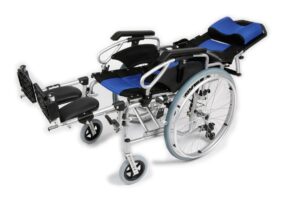We often receive enquiries of this nature from nursing homes and residential homes here in the UK who are wanting to buy replacement wheelchairs. There are a few important questions that need to be asked before you can choose a wheelchair that will suit the requirements when you are searching for a wheelchair for a care home. The majority of nursing homes make sure to have a variety of wheelchairs available to ensure that they are able to provide adequately for all of their patients.
Which size wheelchair is best
So what size wheelchair is it best to use? It is advisable to use the seat width as a guide, with 18 inches being considered the standard wheelchair seat width. In an era where population is getting heavier you will need to consider having heavy-duty extra-wide wheelchairs if you have certain users who are overweight or larger. These wheelchairs are frequently referred to as bariatric, extra wide or heavy duty wheelchairs.
Wheelchair user weight limit
Guideline information regarding the maximum user weight is provided by the wheelchair manufacturers for each type and model of wheelchair. These weight limits need to be observed in order to guarantee that the wheelchair is robust enough to support the weight of the user without putting the chair or the user at risk of being damaged.
Types of wheelchairs
There are primarily two categories that can be distinguished from one another: transit wheelchairs, in which the user is pushed by an attendant, and self-propelled wheelchairs, in which the user moves the wheelchair along on their own, despite the fact that the wheelchair has push handles and can also be propelled by an attendant. Most care homes that we deal with chose to provide both types of wheelchair to their users. Flexibility is important as some users may prefer a transit wheelchair whilst inside the confines of the home but may prefer a self propelled model when they are outside.
Fixed or reclining wheelchairs
Until relatively recently, reclining wheelchairs were considered to be very specialised; but, in more recent times, they have gained acceptance as being relatively commonplace and have become more affordable.

When a wheelchair user wants to relax or when they need to relieve pressure on their spine, they are able to recline the wheelchair backrest using some simple lever handles that allow the backrest to go back in a slow and controlled way.
In addition to reclining wheelchairs, tilt in space wheelchairs provide a similar function but work slightly differently. These wheelchairs tilt not only the seat but also the back rest, which once again helps to reduce the pressure that is placed on the spine and provide enhanced comfort for the user.
See our range of reclining wheelchairs here
Other wheelchair features to look out for
Certain wheelchair users may have additional needs, such as elevating leg rests, head and neck rests, or other features. An occupational therapist is the best person to advise on these special features as they are the most qualified to prescribe the best functionality.
The majority of residential care facilities require a variety of wheelchairs to accommodate a wide range of situations. Despite the fact that the majority of wheelchairs will only be used within the confines of the care home and its grounds, some of them will be transported off-site for activities such as visits to the hospital or outings.
Folding wheelchairs
For this reason, folding wheelchairs are an absolute necessity in this scenario since they simplify the process of storing and transporting the wheelchair. Even if the majority of models fold, it is still a good idea to seek for one that has a backrest that folds in half because this decreases the amount of storage room that is required by the chair.
Both reliability and the quality of the construction are important when buying a new wheelchair. For example the quality of the welded joints will effect how strong the wheelchair is and therefore how long it will last once it is in daily use such as in a care home environment.
Wheelchair weight is also an important consideration. Typically a heavier wheelchair will be stronger as it uses more metal in its build. However lightweight aluminium wheelchairs can also be strong and support similar maximum user weights to their steel counter parts.
If the wheelchair is likely to be lifted for stowing or transportation then a lightweight model may be the best option.
Wheelchair hygiene
Lastly, one of the most important characteristics of wheelchairs is the ability to clean the upholstery on a regular basis. This is best done by removing the upholstery and washing it separately.
There are some specific fabrics that have been developed by some wheelchair manufacturers which help to repel dirt including bacteria. It is worth considering these designs in a care home environment to help stop the spread of infections.
If you have any specific requirements or would appreciate some advice before you buy a wheelchair for a care or residential home, then please feel free to call us and we will be happy to point you in the right direction for your new wheelchair.
